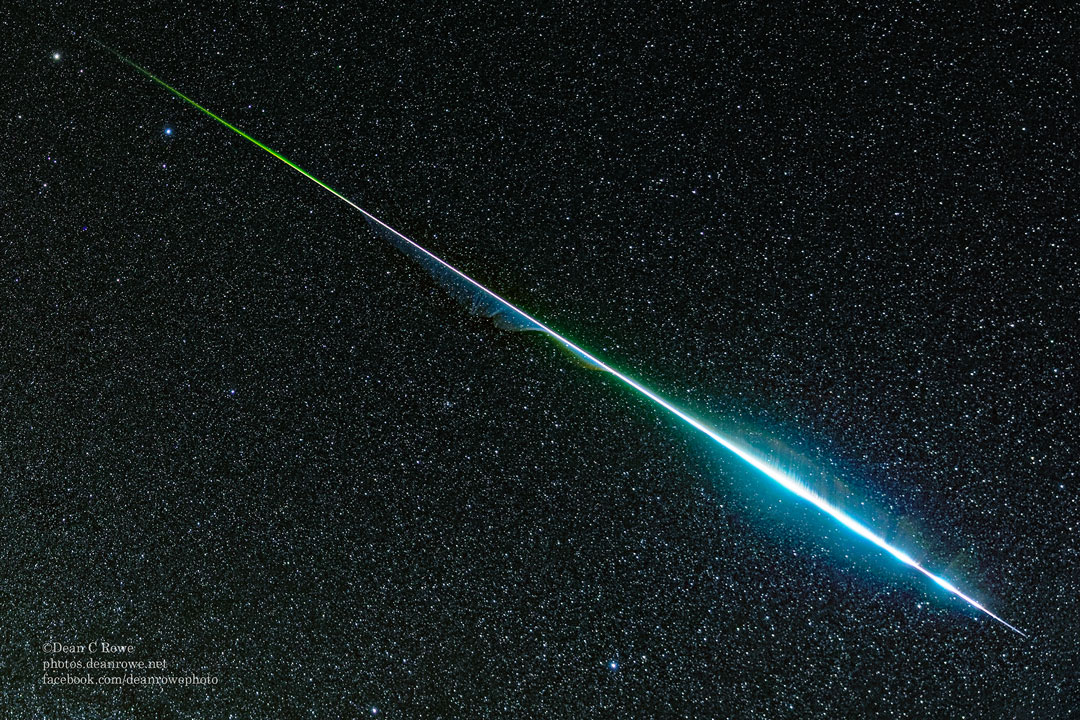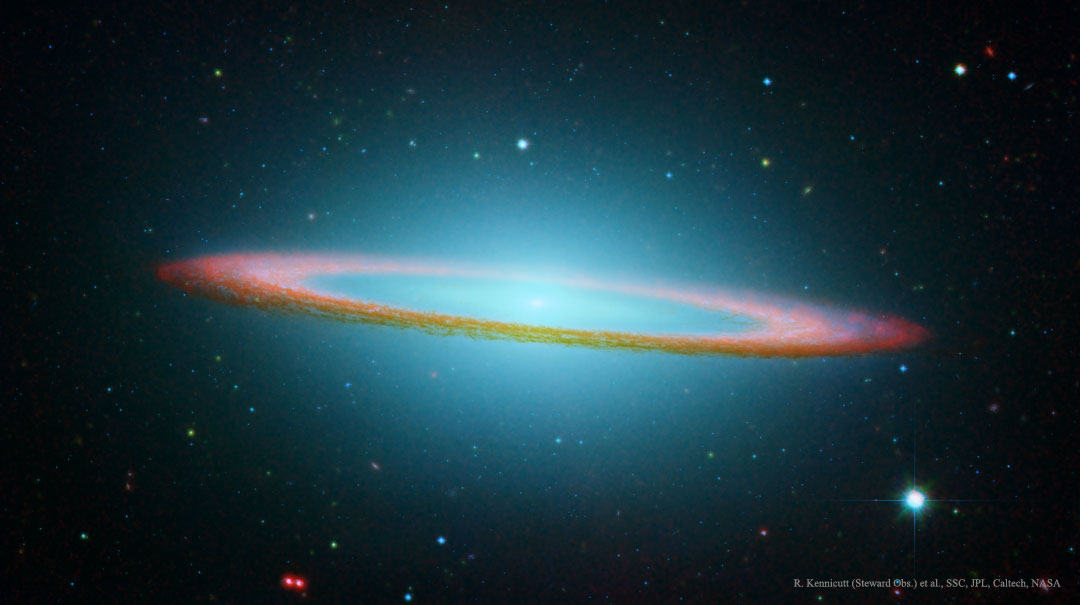
2018年12月31日 星期一
The Sombrero Galaxy in Infrared

Meanwhile OSIRISREx Is Now Orbiting A Tiny Asteroid
It's official! I'm in orbit around #asteroid Bennu -- now the smallest body ever orbited by a spacecraft. My snug path around the asteroid also sets a new record for the closest orbit of a planetary body by any spacecraft. #HappyNewYear, indeed! More ➡️ https://t.co/fwL3FEVU9m pic.twitter.com/ceavR7ju6i
— NASA's OSIRIS-REx (@OSIRISREx) December 31, 2018
from NASA Watch http://bit.ly/2s0WQAs
via IFTTT
Pale Blue Dot 2.0?
Question: "Can @NASANewHorizons reproduce the famous "Pale Blue dot" image? @AlanStern: Yes we think we can but there is a risk of burning the cameras out - permanently - so we would want to do all flybys first. #UltimaThule pic.twitter.com/Rzmreuo1af
— NASA Watch (@NASAWatch) December 31, 2018
from NASA Watch http://bit.ly/2QeomE9
via IFTTT
New Horizons Flyby Of Ultima Thule
Media Briefings, Online Coverage of Ultima Thule Flyby
"NASA's New Horizons spacecraft is on track to perform the farthest flyby in history, when it zips past a Kuiper Belt object nicknamed Ultima Thule -- more than four billion miles from Earth -- at 12:33 a.m. EST on Jan. 1. Flyby activities are taking place at the home of New Horizons operations, the Johns Hopkins Applied Physics Laboratory (APL) in Laurel, Maryland. A schedule of events, set for broadcast and streaming on NASA TV and social media channels, is below."
from NASA Watch http://bit.ly/2F0SIZU
via IFTTT
2018年12月30日 星期日
The Witch Head Nebula

Space Scientists Have More Impact Than You Think
The Most Famous Person To Die In 2018, According To Data Science, Huffington Post
"What this graph doesn't tell us, however, is who specifically was the most famous person to die in 2018. To calculate this, we need a means to measure an individual's level of fame. And this is where we can borrow a trick from Google. The search engine ranks results by counting the number of pages linking into a given page - the theory being that the more pages linking there, the more authoritative it is. And using this Wikipedia data, we can do something similar: We can count the number of other Wikipedia pages linking to the dead person. The bigger the number, the bigger the impact that person had on our world."
"10 - Paul Spudis - Aug. 29 - Scientist - 1502"
Paul Spudis, earlier post
from NASA Watch http://bit.ly/2EUoOGN
via IFTTT
Nancy Grace Roman
Nancy Grace Roman, astronomer celebrated as 'mother' of Hubble, dies at 93, Washington Post
"Undeterred by the barriers to women in the sciences, Dr. Roman found a professional home at NASA. Even there, she recalled in an interview years later, she felt compelled to use the honorific "Dr." "Otherwise," she said, "I could not get past the secretaries." After joining the fledgling space agency in 1959, Dr. Roman became the first chief of astronomy at NASA headquarters, a role that made her one of the agency's first female executives. She remained in that position for nearly two decades before her retirement in 1979."
- NASA Administrator's Statement Regarding Nancy Grace Roman
- Nancy Roman, Wikipedia
from NASA Watch http://bit.ly/2EXKOQf
via IFTTT
2018年12月29日 星期六
The Galaxy Tree

2018年12月28日 星期五
New Horizons at Ultima Thule
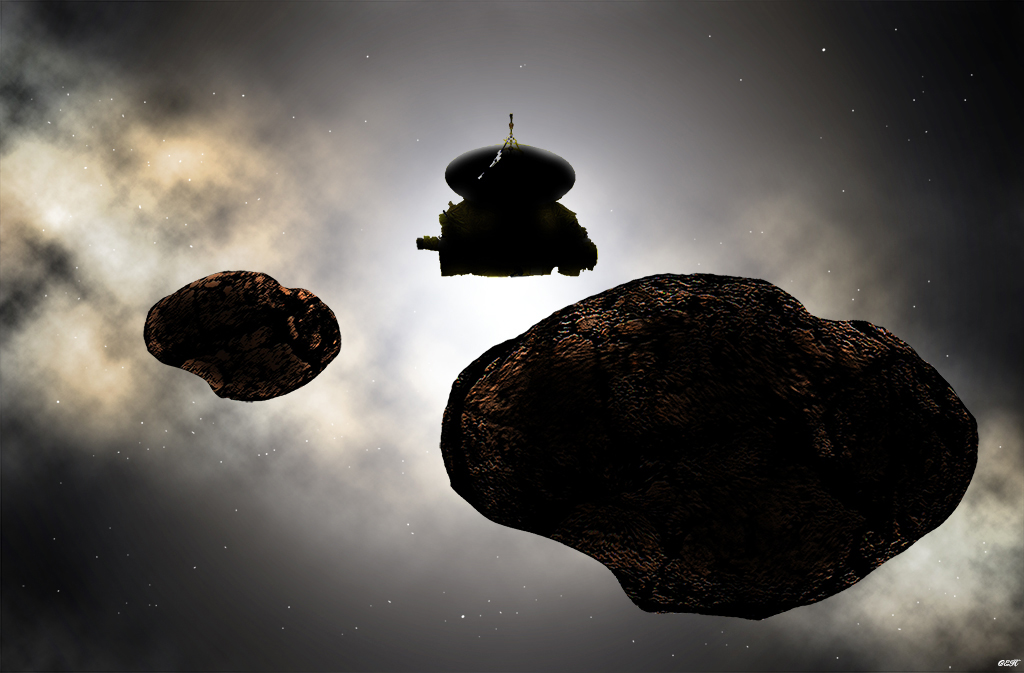
2018年12月27日 星期四
NGC 1365: Majestic Island Universe
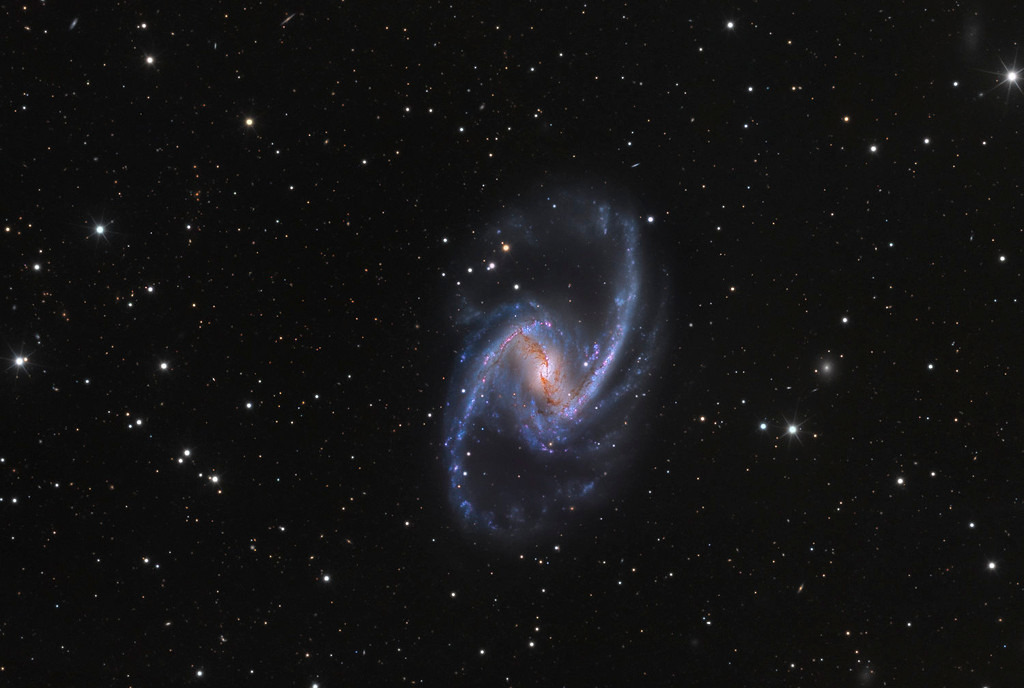
Shutdowns And History
If the #Apollo8 mission had happened during a #GovernmentShutdown there would not have been any Christmas Eve broadcast from the Moon by @NASA#UltimaThule #UltimaFlyby pic.twitter.com/vUnEzR05wd
— NASA Watch (@NASAWatch) December 27, 2018
from NASA Watch http://bit.ly/2QYytm8
via IFTTT
Shutdown: NASA Employees Ordered Not To Do Any Space Exploration
Planning for a Government Shutdown, NASA
"During the Shutdown Furlough, you will be in a nonpay, nonduty status. During this time, you will not be permitted to serve NASA as an unpaid volunteer. You must remain away from your worksite, and may not work at home, in another location, or participate in events hosted by non-NASA entities in your official capacity like speeches or speakers bureau engagements, unless and until recalled."
"NASA is currently CLOSED due to a lapse in Government funding Orderly Shutdown Will Begin December 26, 2018"
NASA, other federal workers not as supportive of government shutdown as Trump claims, union rep says, Houston Chronicle
"Trump has argued that federal workers support the shutdown, saying Tuesday, "Many of those workers have said to me and communicated, 'stay out until you get the funding for the wall.' These federal workers want the wall, " according to an ABC News story published on Christmas Day. In its statement, the union said Trump needs to stop "gambling with the lives of federal workers." "If the president wants to gamble, perhaps he should go back to running casinos," the statement said."
Government shutdown grounds NASA testing, Sandusky Register
"Most recently, a simulated spacecraft resembling Orion's actual article underwent and aced noise-related tests. Engineers collected data to input into Orion's actual article, ensuring, upon a scheduled 2021 launch, the spacecraft can withstand extreme vibration it'll likely encounter in space. Depending on the shutdown's length, a federal holdup could push back several crucial Orion-related experiments scheduled for 2019 at Plum Brook. Before then, Plum Brook's staff has prepared for these tests, analyzing data gathered from past trial runs. Though the stoppage means these workers and others contracted to work with NASA at Plum Brook on other projects must stand idle and wait for who knows how long."
from NASA Watch http://bit.ly/2Akbyr0
via IFTTT
New Horizons fast approaching 2014 MU69
from Planetary Society Blog http://bit.ly/2TcwCGH
via IFTTT
2018年12月26日 星期三
A new look at Europa, with old data
from Planetary Society Blog http://bit.ly/2TbGSiq
via IFTTT
2018年12月25日 星期二
NGC 6357: The Lobster Nebula
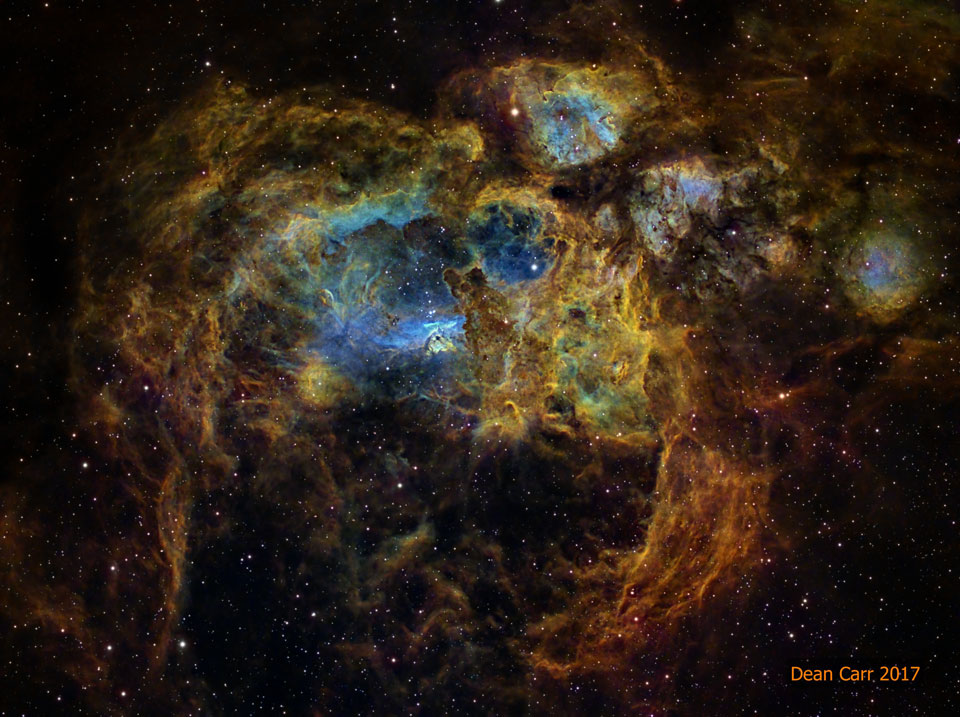
2018年12月24日 星期一
M100: A Grand Design Spiral Galaxy

Life Imitates Art: Building Big Spaceships In The Desert
|
|
from NASA Watch http://bit.ly/2AaGgTe
via IFTTT
2018年12月23日 星期日
Earthrise 1: Historic Image Remastered

GPS III Space Vehicle 01 Mission

On Sunday, December 23rd at 5:51 a.m. PST, SpaceX successfully launched the United States Air Force’s first Global Positioning System III space vehicle (SV) from Space Launch Complex 40 (SLC-40) at Cape Canaveral Air Force Station, Florida. The satellite was deployed to its intended orbit approximately 1 hour and 56 minutes after liftoff. Due to mission requirements, SpaceX did not attempt to land Falcon 9’s first stage after launch. You can watch a replay of the launch webcast below and find out more about the mission in our press kit.
from SpaceX News http://bit.ly/2V5bKTD
via IFTTT
Why Did JPL Shut Down Half Of A Website?

from NASA Watch http://bit.ly/2EJ6Ndh
via IFTTT
2018年12月22日 星期六
Earthrise: A Video Reconstruction

Happy Holidays. NASA is Shut Down.
from Planetary Society Blog http://bit.ly/2EIB0dn
via IFTTT
2018年12月21日 星期五
A Cold December Night
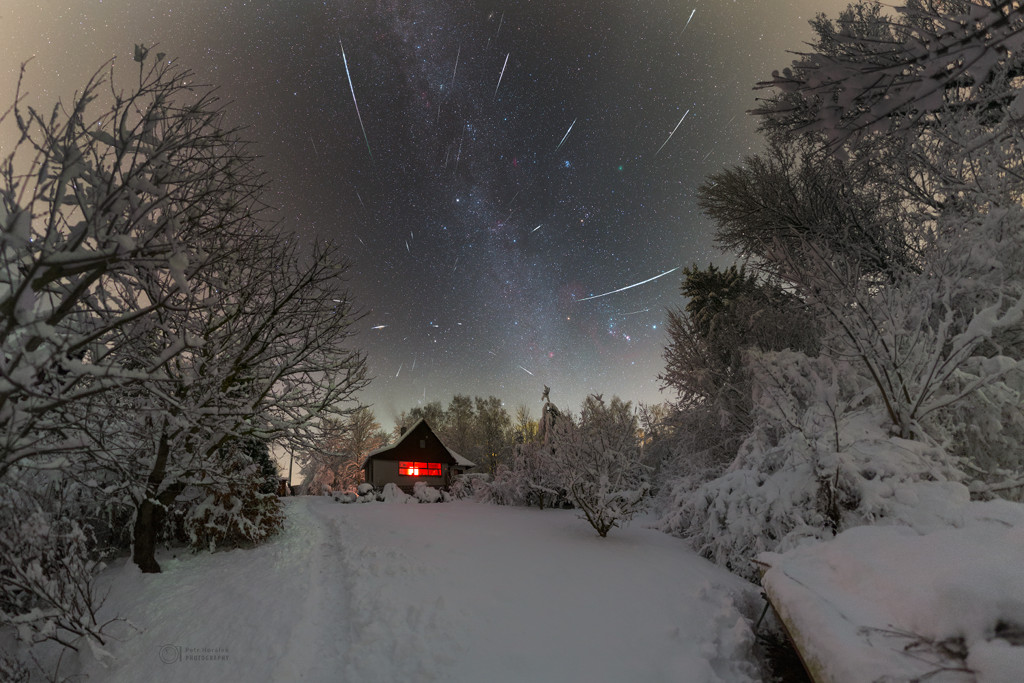
NASA's Greatest Hits For 2018
Message from the Administrator 2018: A New Approach to the Moon and New Heights at NASA
"Our work at NASA is difficult, but it is important. Below is a list of many of NASA's biggest accomplishments of 2018. They are the result of your hard work, talent, dedication and passion. I look forward to working with all of you in 2019 as we continue moving forward to the Moon and on to Mars."
from NASA Watch http://bit.ly/2Ltl27q
via IFTTT
NASA's Shutdown Plan
NASA Shutdown Plan, 16 December 2018 (pdf)
"Pursuant to OMB Circular A-11, Section 124.2, NASA is hereby submitting a revised shutdown plan in the event of a lapse in appropriations, updating the plan submitted to OMB on September 25, 2015, In this plan, NASA continues to require each NASA Center to provide for protection of life and property. The Decision on what personnel should be excepted from furlough is very fact-specific , and DIrectors in charge of NASA Centers are in the best position to make detailed decisions regarding the suspension of ongoing, regular functions which could imminently threaten the safety of human life or the protection of property."
"NASA's plan recognizes that the excepted activities include the following:
- Space launch hardware processing activities, which are necessary to prevent harm to life or property.
- Tracking, operation, and support of the ISS and operating satellites necessary for safety and protection of property.
- Completion or phase-down of research activities in cases where serious damage to property would result from temporary suspension of the activity."
from NASA Watch http://bit.ly/2rN6pD2
via IFTTT
Dawn Journal: Final Transmission
1. Things that can’t go on forever, go on much longer than you think they will.
2. Corollary 1 applies even after taking into account Corollary 1.
When it stopped, Dawn was in its extended mission orbit 7 (XMO7). Every 27 hours, the intrepid ship dove from 2,500 miles (4,000 kilometers) to 22 miles (35 kilometers) above the ground, only three times higher than a typical passenger aircraft travels over Earth, and then soared back up again. It had a fantastic view as it streaked over the alien landscape at 1,050 mph (1,690 kph). (While the supply of hydrazine was very limited, it seemed there was no end to the adrenaline. Too bad Dawn's reaction control thrusters couldn't use that chemical instead.) The spacecraft expertly performed high-resolution measurements, providing scientists with a wealth of exquisite data and giving everyone incredibly detailed looks at the exotic sights.
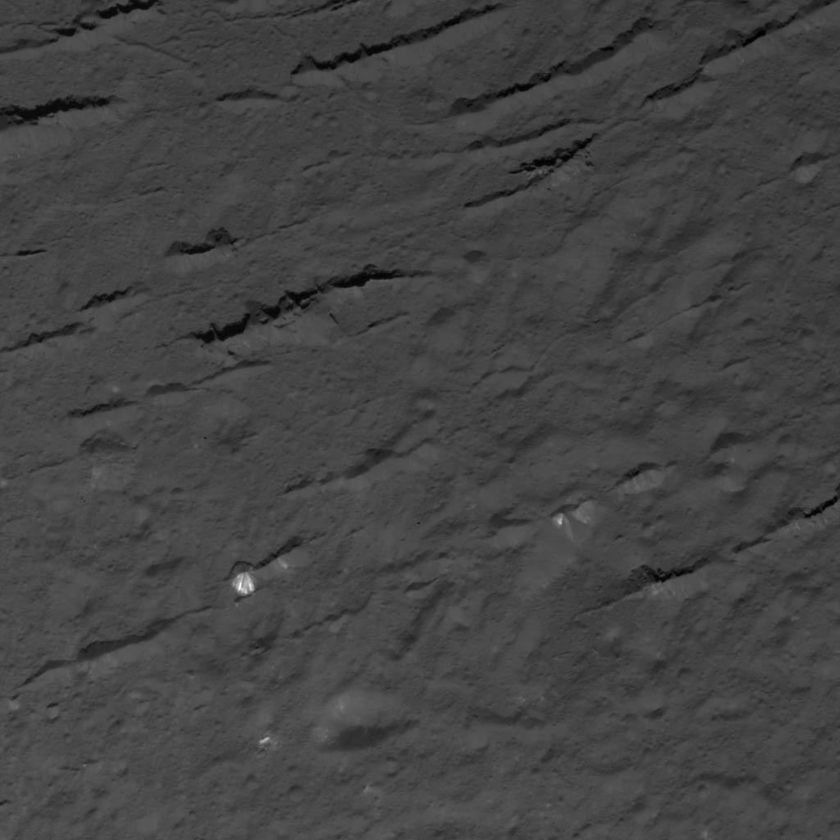
NASA / JPL-Caltech / UCLA / MPS / DLR / IDA
Floor of Occator Crater
Dawn observed this area southwest of Cerealia Facula, near the center of Occator Crater, on July 4 from an altitude of 30 miles (48 kilometers). The view here is 3.0 miles (4.8 kilometers) across. Sunlight comes from the top of the picture, so the many straight features that are light on the bottom and dark on the top are fractures in the ground. Similarly, craters are light on the bottom, where the crater wall catches the light, and dark on the top, where the wall is in shade. Elevated features, like mounds, in this strange terrain are light on the top and dark on the bottom. Several pictures in the
Aug. 22 Dawn Journalshow similar fractured scenery.
Full image and caption.
On Oct. 31, Dawn flew down to peridemeter (the low point of its elliptical orbit) shortly after 5:00 am PDT. As always, to keep its solar arrays pointed at the Sun and its sensors pointed at the ground, it had to fire its hydrazine thrusters extensively. Using the thrusters was routine after having operated for more than half of its time in space without the use of the reaction wheels that were intended for controlling its orientation, but which had failed. While the spacecraft didn't know the hydrazine was about to run out, mission controllers had known for quite some time.
As is typical for missions in deep space, Dawn operated most of the time out of radio contact. NASA's Deep Space Network (DSN) cannot serve all missions simultaneously, and often spacecraft have tasks to perform that are incompatible with radio communications. As it turned out, however, Dawn's final moments happened to be while the largest antenna at the Goldstone Deep Space Communications Complex in California was tracking it. The 230-foot (70-meter) antenna thus allowed the flight team to hear Dawn's swan song.
We have described before that with Dawn broadcasting through an auxiliary antenna when it flew close to the ground, scientists and engineers could learn about Ceres' interior. The spacecraft's radio signal was too weak to carry data to the DSN. Rather, it was as if Dawn were playing a single note with no variation. That may not make for an especially imaginative or melodious performance, but as different regions underground exerted their gravitational pulls and accelerated and decelerated the probe, the Doppler shift was music to the ears of planetary geologists.
By observing changes in the strength and some other characteristics of the signal (and knowing the likely explanation), engineers were able to reconstruct some of the spacecraft's final actions. Around 20 minutes after it was at peridemeter, still quite low but with its momentum starting to carry it back up to high altitudes, the hydrazine thrusters became ineffective. Dawn recognized that it could no longer control its orientation (although it did not know the reason) and systematically proceeded through all the contingency procedures possible, such as swapping to backup equipment and even rebooting its main computer. It made valiant attempts and continued to operate with the professionalism of a dedicated, veteran space explorer, but without hydrazine, there was nothing it could do. The outcome was inevitable. Dawn was up against an unsolvable problem.
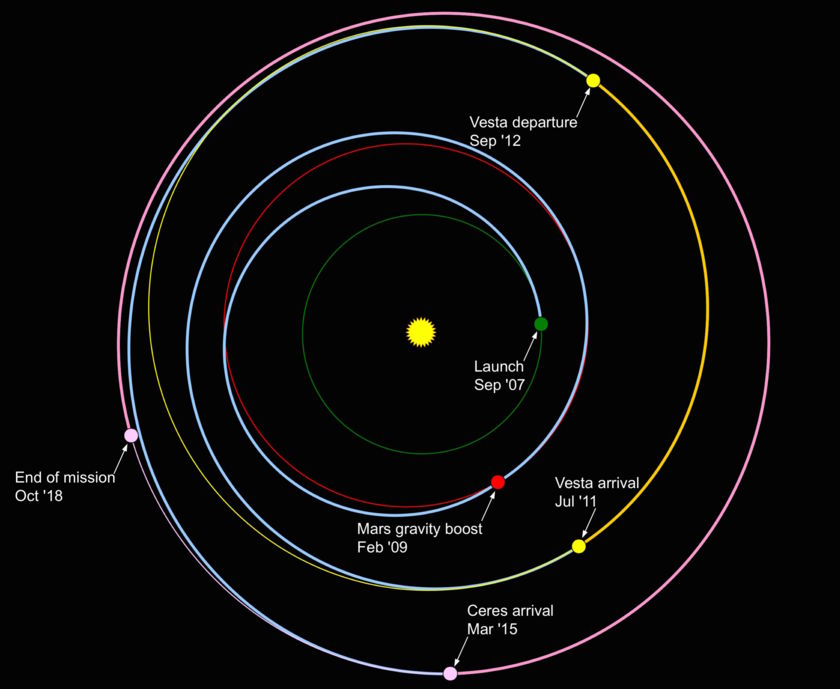
NASA / JPL-Caltech
Dawn mission trajectory
Dawn's interplanetary trajectory (in blue). Over the course of the mission, we have charted the spaceship's progress on this figure, most recently in
September. There will be little need to update it again.
Although the spacecraft's depletion of hydrazine and subsequent inability to communicate had been predicted for quite some time, your correspondent considered it worthwhile to verify the diagnosis. It was possible, albeit highly unlikely, that some other problem had befallen Dawn and that after the scheduled session with the Goldstone antenna, the sophisticated robot would solve it and try to reestablish radio contact.
The plan then was for the flight team to look for Dawn at night. Hours after young trick-or-treaters everywhere had finished extorting sweets from their elders, when Earth had rotated so that another 230-foot (70-meter) antenna, the largest at the Madrid Deep Space Communications Complex, could point at Dawn's location in the sky, controllers listened again. Not even the faintest whisper was heard. The remote spacecraft was orbiting Ceres as silently as the cold vacuum of space itself.
After more than 11 years of an incredibly exciting, fantastically fruitful, extremely difficult, deeply rewarding, super fun and just totally awesome interplanetary adventure, your correspondent declared the mission over shortly before 1:30 am PDT on Nov. 1.
The mission had been a dream come true. Now the dream was over.
Somehow, the stark reality of the end of the phantasmagorical mission in the middle of the night seemed to turn upside down the meaning of a proverb commonly (but vaguely) attributed to Africa: "However long the night, dawn will break."
This video captures some of the highlights of Dawn's interplanetary adventure, as well as some personal reflections on it.
With a rare excursion into first person, I wrote in my Aug. 22 Dawn Journal about how I felt with the mission coming to an end (and offered a fanciful additional perspective at the end of my Sept. 27 Dawn Journal). My feelings were unchanged when the end came. Nevertheless, in the actual event, I wrote down some of my thoughts, because Dawn was such a significant part of my life, and I am well aware of the fallibility of human memory. Memories, however vivid, are often more of a reconstruction than people like to believe.
But I quickly realized that it didn't matter how I was feeling! Here is an unedited excerpt of what I wrote after declaring the mission to be over: "These feelings are transitory, and I don't need to remember them anyway. It would be a mistake to consider how I feel now as somehow representing my overall experience or feelings about the mission. Indeed, this is very much the wrong time to try to put it into perspective. It would make a good story if I had some revelation or profound description of my feelings at this point, but there's no reason I should. It takes time to gain a good perspective. People construct and then gradually change their memories, all without any awareness. And I should not think that somehow now I will be imbued with the wisdom, insight, or other capability to put this into perspective. If I feel sad, elated, disappointed, relieved, proud, empty, gratified or any of myriad other feelings -- and, more to the point, a combination of myriad feelings -- I won't feel that way again. The end of Dawn is not what's important. All that preceded it is. And I cannot so easily grasp it all right now, so my feelings now are not as special or as meaningful as one might be tempted to think."
Finally, you can't appreciate the end of the mission if you don't appreciate the rest of the mission. So, feel free to reread the previous 310,000 words in Dawn Journals to gain the full appreciation.
There will be future opportunities to address some of the overall accomplishments of the mission and discoveries about Ceres. For now, we will devote more attention to this final phase.
And there was no doubt about its finality. On Nov. 1-2, immediately after the official end of the mission, there was not enough time to reallocate previously scheduled DSN antenna time to other missions. So although confidence was high that Dawn would forever be silent, each of the three deep space communications complexes (Goldstone, then Canberra, and then Madrid) turned a sensitive ear to Ceres for one last time. No surprises occurred.
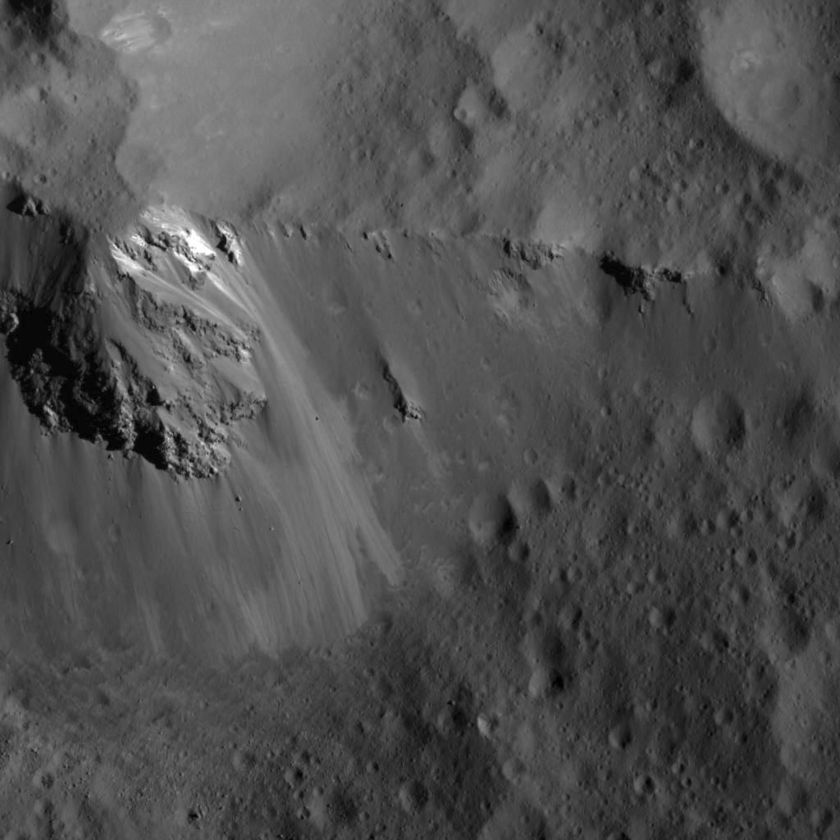
NASA / JPL-Caltech / UCLA / MPS / DLR / IDA
Ridge within Urvara Crater
Dawn took this picture of a ridge in the center of Urvara Crater on July 16 from an altitude of 32 miles (58 kilometers). The scene is 3.4 miles (5.5 kilometers) wide. Note the patterns of flow down the slope. We saw this landscape from twice as high (and therefore with only half as much detail) in
August. The
location of peridemeter shifted in XMO7, so during the 10 days between the earlier picture and this one, Dawn's altitude when it flew over this location decreased, allowing it to capture this sharper view.
Full image and caption.
The final phase of Dawn's exploration began in June when it completed maneuvering to XMO7. We have explained that as the orbit precessed so that peridemeter gradually shifted from Ceres' day side to the night side, photography, infrared spectroscopy and visible spectroscopy became less valuable. The spacecraft had collected a tremendous number of such measurements earlier in the mission, so when it flew over illuminated terrain in XMO7 at higher altitudes than it had already been, new observations were not worthwhile. (Low altitude measurements of Ceres' nuclear radiation and gravity continued in darkness to the very end of the mission.)
Recognizing that the hydrazine would be long gone by the time peridemeter moved back to the day side, controllers took advantage of a nice opportunity at higher altitude for a last, fond look at Ceres on Sept. 1-2. As the dwarf planet pirouetted before the admiring eye of its permanent companion, Dawn recorded its final views of Ceres. One of them is shown above and another is below.
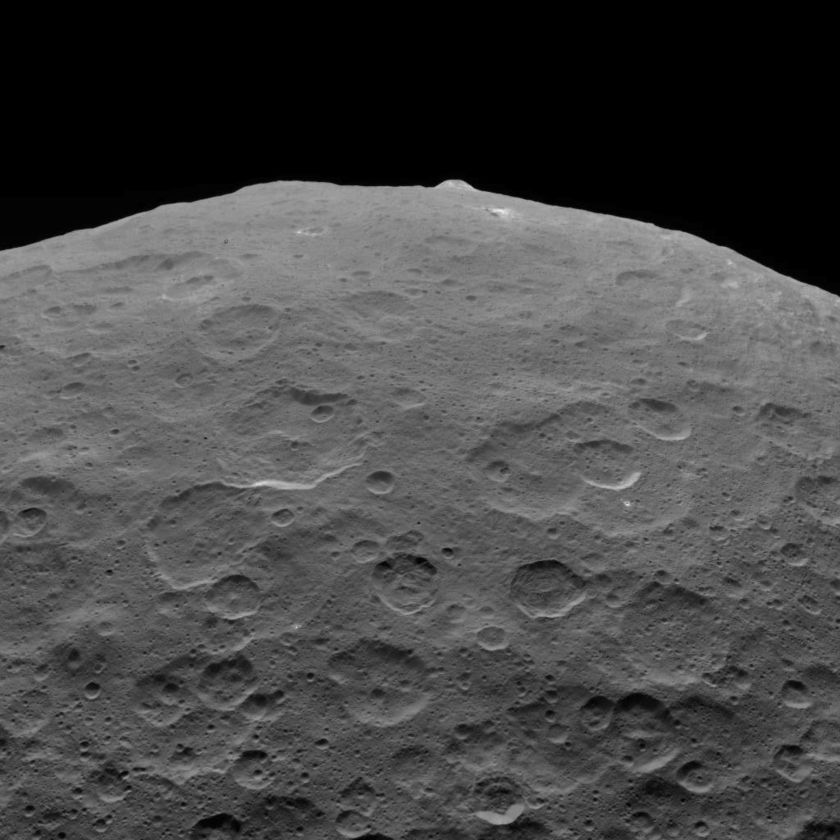
NASA / JPL-Caltech / UCLA / MPS / DLR / IDA
Limb of Ceres
On Sept. 1 while coasting up, Dawn looked back at Ceres from an altitude of 2,220 miles (3,570 kilometers). Prominent on the limb, at a distance of 2,500 miles (4,030 kilometers), is Ceres' youngest cryovolcano, Ahuna Mons. Scientists have identified more than 20 other likely Cerean cryovolcanoes, but they are generally less distinct, because, like some of the craters, the dwarf planet slowly
erasesthem. We have seen many other views of Ahuna Mons, most recently
here. We saw the mountain on the limb (with Occator Crater in the view as well) from even higher up
last year.
Full image and caption.
On Sept. 28 and 29, Dawn performed a calibration of the camera and the visible and infrared mapping spectrometer for one last time. They are precision scientific instruments, and the thorough analysis of their data depends on accurate knowledge of their sensitivity and other properties. The team has conducted calibrations throughout the mission so even slight changes could be detected and accounted for in interpreting the pictures and spectra and drawing conclusions about the nature of Vesta and Ceres. Dawn expended a little more of its remaining hydrazine to point the instruments at the stars Vega and Arcturus, which they had observed before. Indeed, the first time was less than three months after the journey began in 2007 (and Vega still holds special significance).
Even though Dawn took no more pictures nor infrared or visible spectra of Ceres after the beginning of September, it acquired a great many before that, far exceeding the team's expectations when planning this phase of the mission. In XMO7, the spacecraft sent more than 11,000 photographs of Ceres to Earth, almost all of them at very low altitude, revealing amazing new details. (This brought the total for Vesta plus Ceres to more than 100,000 pictures.) Also during XMO7, Dawn provided scientists with more than three million infrared spectra and almost 50,000 visible spectra.
We have explained before that Ceres' nuclear glow is very faint, so the gamma ray and neutron detector (GRaND) requires a great deal of data to make its measurements, just as a camera needs a long exposure to record a dark scene. Despite its name, GRaND is meek and unprepossessing, but the instrument does do a wonderful job revealing the atomic composition of the material down to about a yard (meter) underground. GRaND does not need illumination, so it continued to operate even as Dawn glided over ground cloaked in the deep dark of night.
In XMO7, GRaND acquired 140 hours of nuclear spectra from altitudes below Dawn's previous low altitude orbit, at 240 miles (385 kilometers) in 2015-2016. And it accumulated 50 hours of measurements of Ceres' radiation from within 60 miles (100 kilometers) of the ground. GRaND collected about four times as much data in XMO7 as scientists needed to meet their objectives. This will allow them to see Ceres' elemental abundances with much sharper resolution, like a close-up picture, than ever before.
Like the other investigations, gravity measurements far surpassed what the team expected not only when planning XMO7 but even when the spacecraft was there.
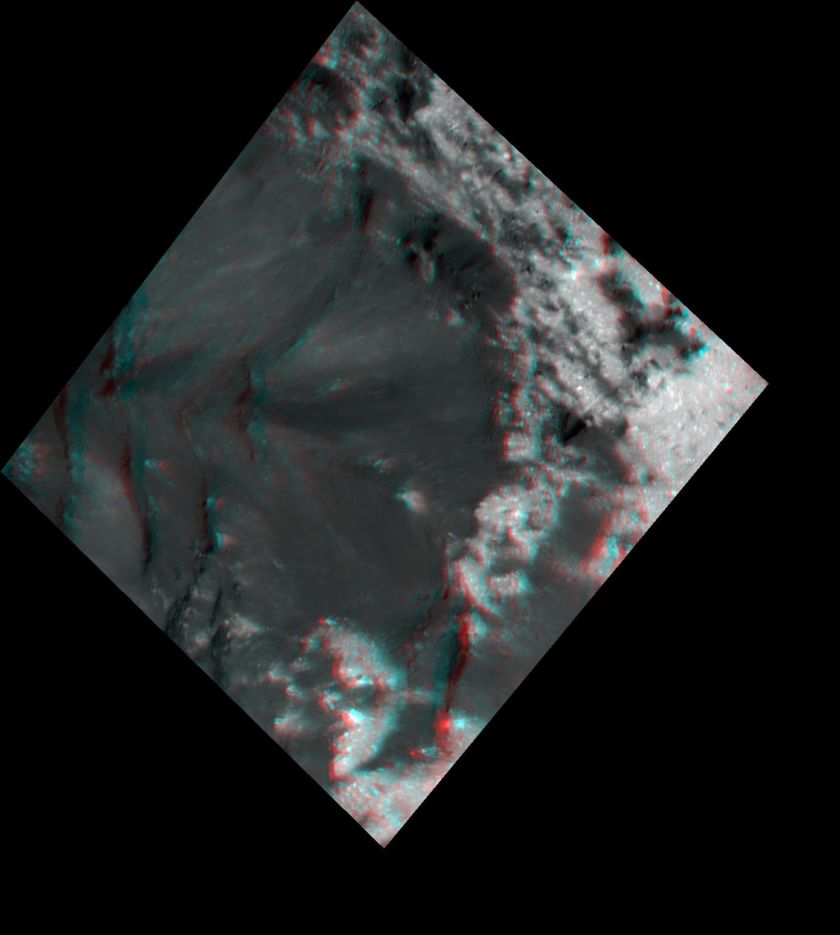
NASA / JPL-Caltech / UCLA / MPS / DLR / IDA / USRA-Lunar and Planetary Institute
3D view of terrain on Ceres
This 3-D image of an area northeast of Cerealia Facula was constructed with two photos Dawn took from an altitude of 21 miles (34 kilometers) in June. The spacecraft peered down at this exotic landscape from different angles in two orbital passes, providing the pair of stereo pictures. To perceive the 3-D, you need color filters, with red for your left eye and blue for your right. (You could get a 4-D view by looking at it for a while. However, apart from the daily and annual changes in the angle of the incoming sunlight, no changes are expected to be discernible even over a few years. Patience, and a follow-up mission, would be required.)
Full image and caption.
With the smooth and productive operations in XMO7, these successes may all seem pretty simple. After all, it's only the cutting edge of rocket science, operating an ion propelled spaceship at incredibly low altitude around a dwarf planet well over a million times farther away than the International Space Station. But there were a few challenges to overcome. The team confronted and solved myriad problems to accomplish so much.
Now, even if you don't have your own interplanetary spacecraft, you can explore Ceres and do so from the comfort of your home. Instead of going all the way to the main asteroid belt, bring that distant world to your computer with Cerestrek. You can also see all the sights on the first world Dawn unveiled with Vestatrek.
Dawn, however, will never again explore alien worlds. It will never again emit a bluish beam of xenon ions. It will never again communicate with beings on the faraway planet where its voyage began. It will never again perform any of the functions or tasks it executed so admirably on its remarkable journey. For decades, and quite possibly even for centuries, the ship that undertook a long, daring, difficult and successful deep-space expedition on behalf of humankind will remain silently in orbit around Ceres. It has become an inert celestial monument to the power of human ingenuity, creativity, and curiosity, a lasting reminder that our passion for bold adventures and our noble aspirations to know the cosmos can take us very, very far beyond the confines of our humble home.
Dawn is 1,800 miles (2,900 kilometers) from Ceres. It is also 3.53 AU (328 million miles, or 527 million kilometers) from Earth, or 1,320 times as far as the moon and 3.56 times as far as the Sun today. Radio signals, traveling at the universal limit of the speed of light, will never again make the round trip.
Dr. Marc D. Rayman
7:30 am PST November 11, 2018
from Planetary Society Blog http://bit.ly/2A9w0uE
via IFTTT
NASA PAO Is Confused About The Microgravity/Weightlessness Thing
Today's dazed and confused @NASA press release sentence award goes to @NASA_Ames for this:
— NASA Watch (@NASAWatch) December 21, 2018
"Orbiting about 250 miles above the Earth in the weightlessness of microgravity" https://t.co/ZJ86lUYTYa pic.twitter.com/empirmMqLI
from NASA Watch http://bit.ly/2T4Wh4a
via IFTTT
Space Frontier Act Passes Senate - Under Consideration In House
Bill Nelson's last big space bill approved by U.S. Senate, Florida Politics
"Senate Bill 3277, which was introduced in July with Texas Republican U.S. Sen. Ted Cruz as primary sponsor and Nelson and Democratic U.S. Sen. Ed Markey of Massachusetts as the co-sponsors, was approved unanimously Thursday. It's closest companion, House Resolution 2809, was approved in the House of Representatives in April, though there are some significant differences. SB 3277 includes a number of provisions, many of them offered by Nelson, which would streamline and clarify the roles played by NASA, the Federal Aviation Administration and other agencies in promoting the commercial space business, and extend and expand NASA's program to work with such private space companies such as SpaceX and Blue Origin at centers such as Kennedy Space Center."
AIA Comment on Senate Passage of the Space Frontier Act
"This bipartisan bill is a strong statement in support of America's growing commercial space industry. It would update space transportation regulations and commit to the full use of the International Space Station through 2030 for critical commercial and scientific purposes. We look forward to working with members of Congress next year to get commercial space legislation passed and signed into law, ensuring American space presence and dominance into the future."
The House brought up the Space Frontier Act under Suspension of the Rules a little bit ago. House SS&T Chm Smith gave a lukewarm speech about it, but recommended that it pass. At the conclusion of debate, the yeas and nays were ordered. The vote will be taken later today.
— Marcia Smith (@SpcPlcyOnline) December 21, 2018
S.3277 - Space Frontier Act of 2018
from NASA Watch http://bit.ly/2CrW0CN
via IFTTT
Space Infrastructure Leasing Bill Passes Senate and House
Space Infrastructure Leasing Bill Sent to President's Desk, House Science Committee
"Today, the House of Representatives unanimously approved S. 7, the NASA Enhanced Use Lease Extension Act of 2018, sponsored by Senator Roger Wicker (R-Miss). The bipartisan bill is now on its way to the President's desk. S.7 enables commercial access to valuable NASA infrastructure and facilities. NASA's enhanced use lease authority gives NASA a crucial tool to partner with the private sector."
from NASA Watch http://bit.ly/2T1Lisg
via IFTTT
Celebrating the 50th Anniversary of Apollo 8's Launch Into History

2018年12月20日 星期四
NASA Leads In Astrobiology. It Needs To Act That Way.
Keith's note: Yesterday I posted an item "NASA Is Incapable Of Explaining How It Does Astrobiology" about Astrobiology-related news from NASA that made no mention of NASA's Astrobiology program. I sent an email about this to all of the people at NASA who run Astrobiology. No response. But they did update their websites. Lets try again.
Two reports were issued yesterday. One, by the National Academy of Sciences (paid for by NASA ~$1 million) covers the issue of how NASA will collect, store, and analyze samples it returns from across the solar system, many of them with overt Astrobiology significance. The other report has to do with a NASA-funded workshop on how to detect indications of extraterrestrial civilizations via their technologies. There is no mention of this article at the NASA Astrobiology web page or at the NASA Astrobiology Institute webpage.
To be fair, NASA does publish a lot of stuff about Astrobiology. Its not like they are completely asleep at the wheel. Then again, they seem to be behind the curve when it comes to the broader aspects of Astrobiology beyond the quirks of NASA's internal budgetary management. They also seem to miss a lot of the broader impacts of the field Astrobiology extending beyond NASA's funding scope - but done as a result of the field that NASA can claim to have established. They are reactive when they should be proactive. FWIW I was there at the first Astrobiology meetings in 1996/1997. Alas, NASA seems to have lost its mojo when to comes to asserting its leadership in this field. Its time to change that. Google "astrobiology". In the U.S. the 3rd search result is my website Astrobiology.com. Maybe I know something. NASA has decided to reboot their whole Astrobiology thing. Maybe they will take the issue of being cutting edge in terms of discussing research and opinion - everyone's research and opinions.
Here are the reports NASA has not mentioned (yet):
"NASA's investment in new instruments to analyze extraterrestrial samples is insufficient to provide for replacement of existing instruments, says a new report from the National Academies of Sciences, Engineering, and Medicine. If NASA does not invest additional funds into the replacement of current instrumentation and development of new technologies, technical staff support, and training for the next generation of analysts, current capabilities cannot be sustained, and the full scientific impact afforded by returned samples might not be realized."
NASA and the Search for Technosignatures: A Report from the NASA Technosignatures Workshop
"This report is the product of the NASA Technosignatures Workshop held at the Lunar and Planetary Institute in Houston, Texas, in September 2018. This workshop was convened by NASA for the organization to learn more about the current field and state of the art of searches for technosignatures, and what role NASA might play in these searches in the future. The report, written by the workshop participants, summarizes the material presented at the workshop and incorporates additional inputs from the participants."
from NASA Watch http://bit.ly/2ECayBu
via IFTTT
Extraordinary Solar Halos

The Government Shutdown And Ultima Thule
|
|
from NASA Watch http://bit.ly/2Luwm3s
via IFTTT
Half A Century Ago We Dared To Make Dreams Come True
#OTD half a century ago h/t @PeterKingCBS #apollo8 #NASA pic.twitter.com/4CIrt6FLCE
— NASA Watch (@NASAWatch) December 20, 2018
from NASA Watch https://ift.tt/2BB2qxJ
via IFTTT
ISS Daily Summary Report – 12/19/2018
December 20, 2018 at 12:00AM
from NASA https://ift.tt/2GKnZSH
via IFTTT
Station Crew Back on Earth After 197-Day Space Mission

NASA Astronaut, Crewmates Return to Earth After 197-Day Mission in Space
December 20, 2018
from NASA https://ift.tt/2GArZov
via IFTTT
2018年12月19日 星期三
NASA Astronaut, Crewmates Returns to Earth After 197-Day Mission in Space
December 20, 2018
from NASA https://ift.tt/2QHvXR3
via IFTTT
Red Nebula, Green Comet, Blue Stars
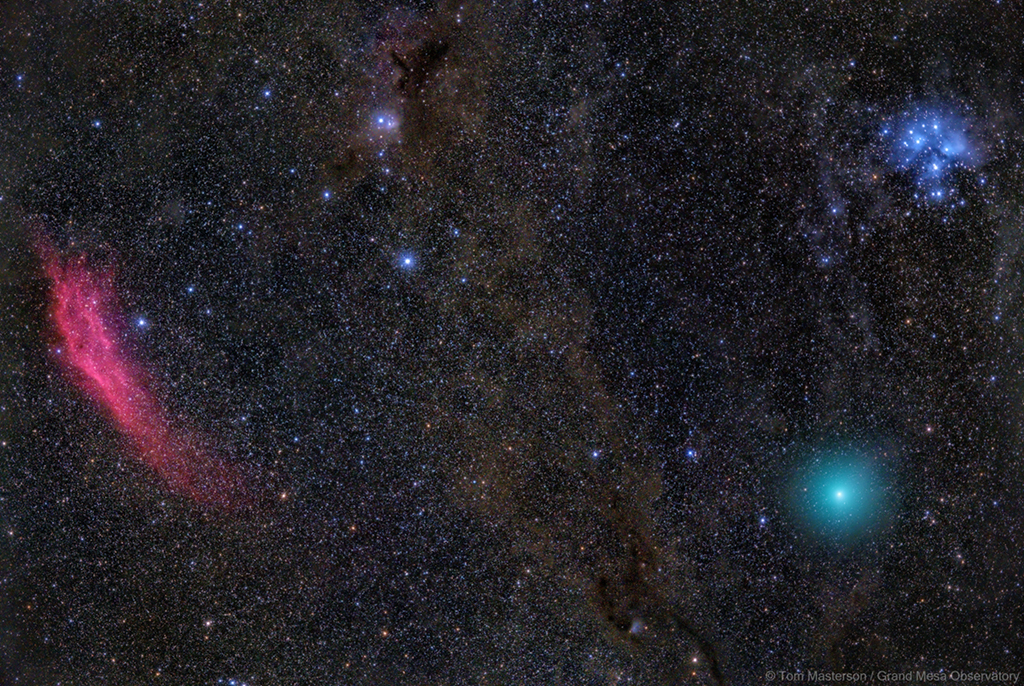
NASA Is Incapable Of Explaining How It Does Astrobiology
Sugar is Sweet, Essential to Life - and It's Probably in Deep Space, NASA
"New research suggests that the sugar molecule that puts the "D" in DNA - 2-deoxyribose - could exist in the far reaches of space. A team of NASA astrophysicists were able to create DNA's sugar in laboratory conditions that mimic interstellar space. The researchers believe their results, published on Tuesday in Nature Communications, show that yet another of life's critical chemical building blocks could be widespread in the universe and potentially seed other planets as well."
Keith's note: This article is about a topic at the core of Astrobiology - the origin and distribution of biogenic compounds and precursors. The only place that "astrobiology" appears on this web page is a tag at the end. There is no mention of this article at the NASA Astrobiology web page or at the NASA Astrobiology Institute webpage It is just baffling that NASA puts things like this out which feature what NASA's Astrobiology Program does - without ever mentioning it. The article originates from NASA Ames - the home of the NASA Astrobiology Institute - and the origin of NASA's Astrobiology program in the late 1990s. You'd think that Ames would want to plug their role in supporting NAI - they have a link to the article but no mention of the NAI. Yes, yes, I know that different funding streams fund different things but in the end its all part of NASA's Astrobiology efforts.
- NASA's Semi-Stealth Astrobiology Mission, earlier post
- NASA's Astrobiology Programs Ignore One Another, earlier post
- NASA Making Changes to its Astrobiology Program, earlier post
- Real Time Astrobiology Expedition News That NASA Ignores, earlier post
- Revious Astrobiology postings
from NASA Watch https://ift.tt/2Gu6RA8
via IFTTT
A Former Employee Calls NASA About The Security Breach
Keith's note: The last two times there was a data breach I was directly affected since I am a former NASA civil servant even though I left the agency 25 years ago. I also underwent a FBI security scan to get a press badge at NASA HQ 15 years ago. I sent an email to NASA HQ PAO, Human Resources, and CIO yesterday asking how media and former employees are affected by the latest security breach. This is the response I got.
It is pointless to send me to the website since I am no longer a NASA civil servant and I do not have a "Smart Card" to log in. So I called the phone number. They never bothered to ask me for my case number (so why was I given one?). A recording of the call is below. Clearly NASA is not prepared for handling responses to former NASA employees about this topic. Note: I am in Virginia which is a "one party" state when it comes to recording phone calls (which I never do if you call me BTW). This is a customer service call that I think is worth sharing.
"Dear Keith, Thank you for your inquiry to the Enterprise Service Desk (ESD) regarding the potential PII compromise. At this time we are being advised to direct all media inquiries to NASA Headquarters, Ms. Karen Northon at [deleted]. We are dedicated to providing you with a high-quality and timely resolution. You can review the status of your inquiry at https://esd.nasa.gov. If you have any questions or need further assistance, please contact us at 1-877-677-2123, option 2 or submit a ticket at https://esd.nasa.gov. For quicker service, reference your case number [deleted] when calling or include it in the subject line of your e-mail. Thank you,
Service Provider, NASA Enterprise Service Desk (ESD)
NASA Shared Services Center
Self-Service/Web: http://esd.nasa.gov/esd
Phone: (877) 677-2123
Fax (support documentation only): (888) 525-6497"
from NASA Watch https://ift.tt/2UYPASQ
via IFTTT
NASA Continues To Flunk Basic IT and Cybersecurity Rankings
Potential Personally Identifiable Information (PII) Compromise of NASA Servers
"On Oct. 23, 2018, NASA cybersecurity personnel began investigating a possible compromise of NASA servers where personally identifiable information (PII) was stored. After initial analysis, NASA determined that information from one of the servers containing Social Security numbers and other PII data of current and former NASA employees may have been compromised."
Keith's note: According to NASA HQ PAO the latest security breach at NASA does nto affect people outside of NASA who may have interacted with NASA security. But people who work or used to work at NASA are at risk. So y'all can expect another "Dear NASA Employee" letter from the agency offering free credit monitoring services.
NASA's performance in complying with Federal regulations governing IT and cybersecurity has been pitiful - especially during the tenure of NASA CIO Renee Wynn. Now there has been another security breach that affects all present and prior NASA employees- even those of us who left the agency decades ago. In the real world the peson responsible for such pitiful performance would be fired.
Federal Information Security Modernization Act of 2014 (FISMA) - 2018 report
"Congress enacted the Federal Information Security Modernization Act of 2014 (FISMA) to improve federal cybersecurity and clarify government-wide responsibilities. The act is intended to promote the use of automated security tools with the ability to continuously monitor and diagnose the security posture of federal agencies, and provide for improved oversight of federal agencies' information security programs. In particular, the act clarifies and assigns additional responsibilities to entities such as OMB and DHS."
- NASA Totally Flunks FITARA Scorecard 2 Years In A Row (2016), earlier post
"There is a slightly goofy post at NASA CIO's Open.NASA.gov (not findable on the NASA search engine) "NASA's Approach to Implementing FITARA" from 10 March 2016 that opens with "My husband and I are planning a vacation to Disneyworld, an awesome destination for our five year old dreamer. How do we budget for such an grandiose trip?", and then goes on to spout happy talk - with added IT word salad - about how seriously NASA takes FITARA. If only."
from NASA Watch https://ift.tt/2EDSPui
via IFTTT
SpaceX’s Crew Dragon Spacecraft and Falcon 9 Rocket

ISS Daily Summary Report – 12/18/2018
December 19, 2018 at 12:00AM
from NASA https://ift.tt/2CnqQMU
via IFTTT
2018年12月18日 星期二
A Rainbow Geminid Meteor
